Text
Week 11 Scrapbook: What Up When it Ain’t in the US?
Ming tian ji de ai shang wo [Will You Still Love Me Tomorrow] (Taiwan)

youtube

Will You Still Love Me Tomorrow is a Taiwanese romantic comedy released back in 2013, and had a limited release in the States in 2014. The story primarily follows Weichung, a man who begins to question his feelings towards his current lifestyle as a husband and father after meeting a handsome young man named Thomas in his workplace. We learn that Weichung used to have a partake in a gay lifestyle with a group of friends (pictured in last photo), but it is explained that he gave it up to satisfy his parents’ final wishes to start a family, hoping that his past feelings would go away once he had a wife. Much of the plot revolves around his internal struggle between keeping his current life in tact, and wanting to follow his heart in pursuing Thomas and returning to his old life. [Important sections from movie clip video: 0:00 - 2:52, 9:27 - 12:20]
youtube
youtube
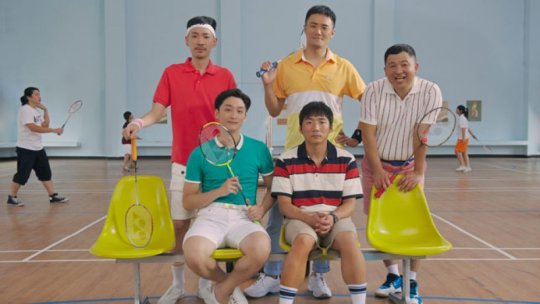
The major climax of the film is when Weichung’s wife, Feng, learns of his affair and her struggle to understand what will happen to their home life. The two had a child together, a son named Awan, who is seen to have difficulty interacting with children his age. This results in Feng’s parents pressuring her to have another child, as a way to help Awan learn to socialize and make friends at school. With the stress of needing to please her parents and the shock of learning of her husband’s past, Feng goes through a fit of confusion and denial, cumulating in a karaoke scene where she renditions The Shirelles song that the film is named after. By the end of the film, not only does she come to accept Weichung and his feelings, she asks for a divorce. Feng explains that, despite she and Weichung still having a close bond due to the amount of time they’ve spent together, the two will never be truly happy in their current lives with one another, and she wishes for him to find the person that he can live a life he won’t regret and be proud of.
The ending shot of the movie is of the two walking side-by-side out of the wedding reception of Weichung’s sister, Weichung holding a sleeping Awan. The crowd of attendees are doing what is usually done to a wedding couple as they exit the church building, throwing flower petals and confetti over their heads, clapping and cheering “Good Luck” as they walk on by. As the building doors open, Weichung and Feng look at one another and smile, almost looking content at what they’ve decided, not afraid of what the future has in store for them. The ex-couple walk out towards a white light, and the film ends, leaving the viewer questioning what will happen next, and how will the people in their lives react to such change?
Ek Ladki Ko Dekka Tot Aisa Laga [How I Felt When I Saw That Girl] (India)
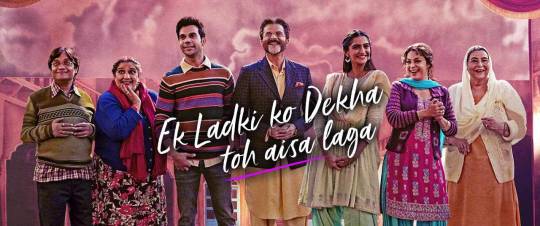
youtube
Released earlier this year in February, How I Felt When I Saw That Girl is an Indian Hindu-language film centering around Sahil Mirza, an up-and-coming playwright who meets and instantly falls in love with Sweety Chaudhary, the daughter of a famous clothing company owner. Much of the advertisements for the film refers to the story as an “unexpected love story,” and cut the trailers in a way that the “unexpected” part of the film’s slogan refers to Sahil, a Muslim man, and Sweety, a Hindu woman who comes from an extremely conversative family. However, it seems that that was exactly what the filmmakers were hoping for, as it is revealed halfway through the film that the unexpected romance wasn't between the two main leads, but of Sweety and her secret girlfriend, Kuhu, whom she would secretly meet with in fear of her family’s rejection.
Sahil, upon learning the truth, decides to help Sweety in coming out to her family through the form of a musical play, with Sweet and Kuhu playing the main love interest. The two are outed by Sweety’s brother in front of their father and grandmother, as well as a small portion of the townspeople. After storming home in denial, Sweety’s father goes through Sweety’s desk and find her journals, in which she described her feelings of being alone and the judgment she faced from her peers over her orientation. The play goes on as scheduled, with no revisions made to the script, resulting in half of the audience leaving the theatre in protest of watching two women fall in love onstage. During the climax, as the actors pull the two lovers apart from one another, calling them names and trying to find ways to “cure” them, Sweety’s father storms the stage, proclaiming to the audience that their love wasn’t something they could change, that he would accept his daughter and her girlfriend, and asks the audience to do the same. The scene ends with Sweety’s brother walking out, still rejecting his sister; their grandmother still feeling conflicted over the current situation, but was willing to work through her biases and accept them; and thier father saying to Sweety “You take a lot more from me. I also like women.”
https://celebrate-diversity.tumblr.com/post/185442222639/pride-month-movies-ek-ladki-ko-dekha-toh-aisa
(Videos 42 - 45) https://www.youtube.com/playlist?list=PLQEZv7R09v83m8IT5tXQoWnxHVWsRWTm5
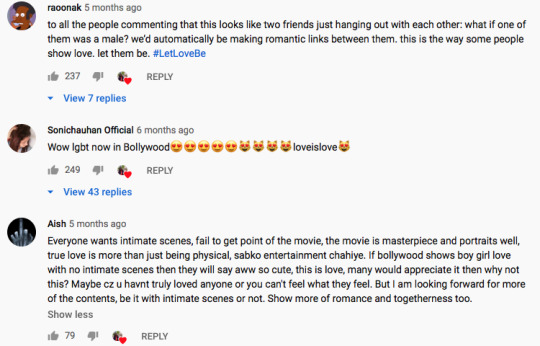
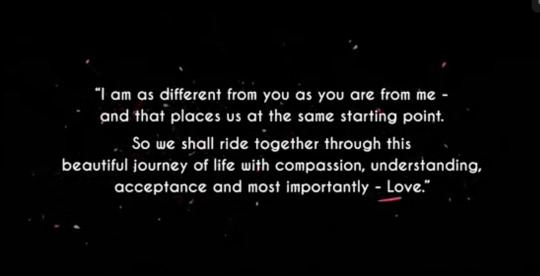
Cuarto Lunas [Four Moons] (Mexico)
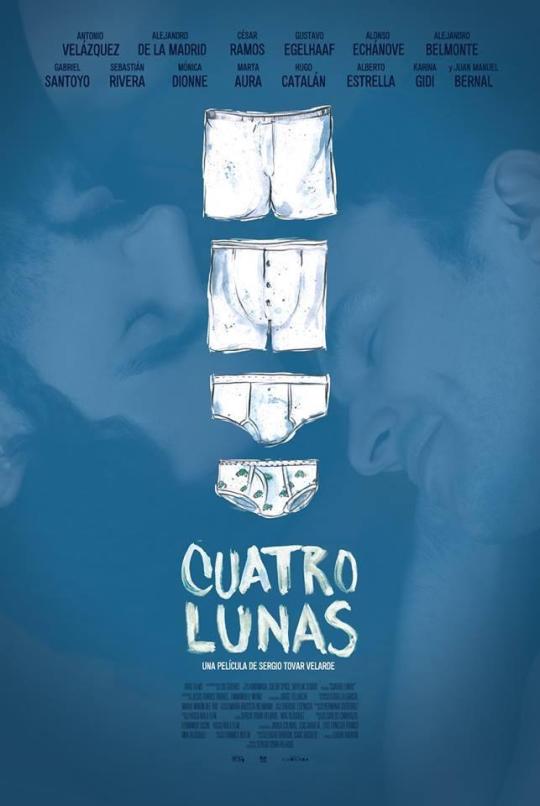
youtube
in this 2014 Mexican film, Four Moons follows four male individuals across four different generations as they go through life, falling in love and learning to accept their feelings, themselves and others of their own. There’s the story of pre-teen Mauricio, who begins to develop feelings for his close school friend; Fito and Leo, two childhood friends who reconnect in college and begin a secret relationship; Hugo and Andrés, a committed couple who are struggling to keep their relationship intact, as one of them finds a new man who fulfills his needs; and Joaquín, a long-married elderly man who begins an affair with a young male hustler.
Each person has something they wish to hide away from the public eye, be it something about their partner they don’t wish their acquittances to see (Hugo’s negative view on Andrés’ flamboyant behavior), their feelings about the one they like (Mauricio), or their entire relationship (Fito/Leo). Each couple deals with real-life issues many couples, both straight and LGBT, go through: from a love spark slowly fading over the years, to the fear of being found out and shunned by family. The film doesn’t shy away from showcasing the emotional moments between characters, which is refreshing to see considering how Mexican culture views masculinity and what it takes to be a man. The male characters are very open and vulnerable when displaying their love, fears and desires to their other male counterparts, with some interactions being the catalyst of one couple’s relationship or another conflict.
(Are You Gay? No, But I Enjoyed It) https://www.youtube.com/watch?v=E_inJt8T6pA
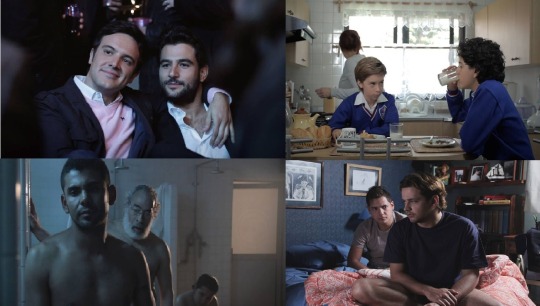
0 notes
Text
Week 9: Gender Explosion
Eugene Lee Yang
Eugene is known a member of the four-man comedy group, The Try Guys, known for their YouTube videos in which they attempt a variety of challenges. Earlier this year, he came out as gay through a YouTube video, where he acted and danced out various points of his life as a gay man and the struggles he faced within his personal life. The video also acted as a fundraiser for the Trevor Project, a non-profit LGBT suicide prevention organization based in West Hollywood (the video currently has raised over $115,000).
youtube
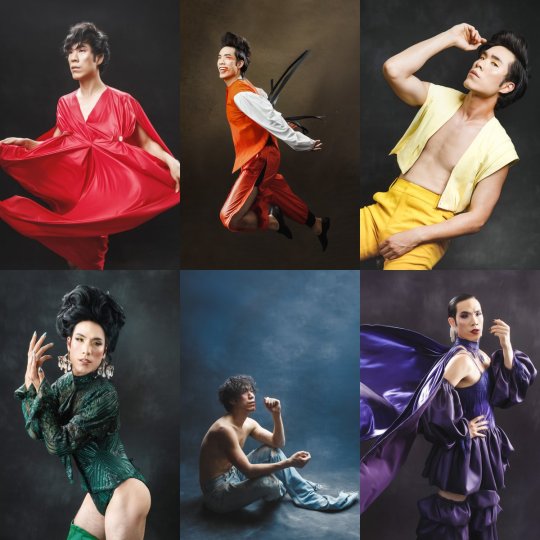
From my recollection, Eugene had always seemed comfortable in expressing himself through his clothing. He and the other three Try Guys (all of whom are straight) have been very comfortable in showing their feminine sides to the public, with many of their most popular videos being of all four doing drag, getting nail extensions, wearing high heels and dressing up in overtly sexual Halloween costumes. However, in the time leading up to and after his coming out, Eugene seems to have fully embrace himself and his style of fashion, knowing that the people around him, both co-workers and fans alike, will fully support him, and are willing to join alongside him in expressing themselves to the fullest.
https://sandersstudies.tumblr.com/post/185378629445/90-of-men-at-awards-shows-the-same-boring-ass

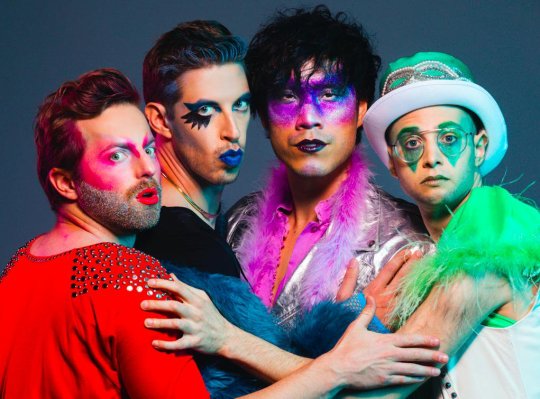


Billy Porter
Billy Porter was originally known for his musical theatre roles, especially in his portrayal of Lola in Broadway’s Kinky Boots. Currently, he is widely recognized for his role of Pray Tell in the FX show, Pose, in which he won the Emmy for Outstanding Lead Actor in a Drama Series, becoming the first openly gay black man to win such a category. It has also been announced that he will be taking on the role of Fairy Godmother in the upcoming reimagining of Cinderella by Sony Pictures.
youtube
In the past year or so, whenever Porter has been seen on any sort of carpet full of reporters and their cameras, be it the Met Gala or the Oscars, all heads would turn towards him as we would appear such extravagant outfits that he completely steals the show from his fellow stars. In a way, it was a refreshing sight to see a man be so comfortable in his person and be willing to express himself no matter what others may say. It has become such an exciting moment to see what Porter will wear at the next big event and see if he able to out-do himself from the last.


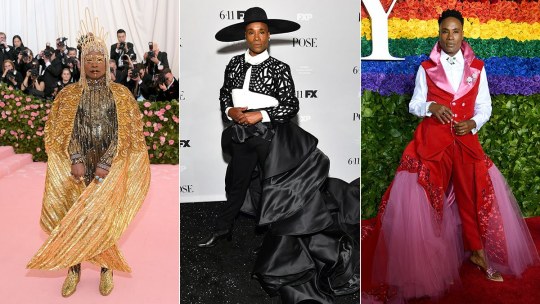
https://www.sbs.com.au/topics/sexuality/fast-lane/article/2019/05/31/billy-porter-breaking-rules-masculinity-ive-been-laughed



Janelle Monae
One of the few women I grew up admiring for breaking the barrier of gendered clothing was Janelle Monáe, a R&B singer turned actress, who was widely known for the preference of a tuxedo wardrobe in her early career. Much of her outfits were reminiscent of the dandy style, a fashion style worn by middle-class men to resemble the aristocracy, with a focus on a black-and-white color palette, with a splash of color here and there.

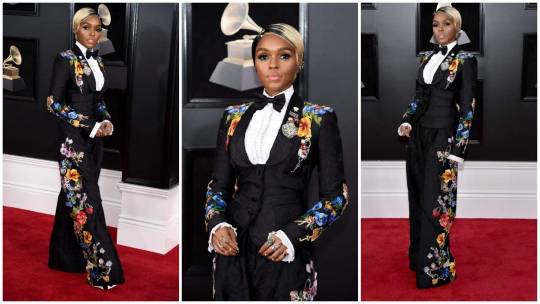
Monáe, who came out identifying as bisexual and pansexual in early 2018, claimed that her wearing androgynous outfits and having a public persona of an android was her way of protecting herself from the public’s judgement about herself and her lifestyle. She would avoid answering any questions regarding her sexuality in early interviews, explaining that the answer could be found in her music, both in her lyrics and videos, for those who are in a similar situation in figuring themselves out. It’s safe to say that I, personally, found Monáe in the right time in my life. While she is slowly letting go her tuxedo-based fashion sense as she builds herself up in Hollywood, there is still some semblance of her old career self that she is keeping with her, and hopefully will continue to hold in the future.
https://www.rollingstone.com/music/music-features/janelle-monae-frees-herself-629204/
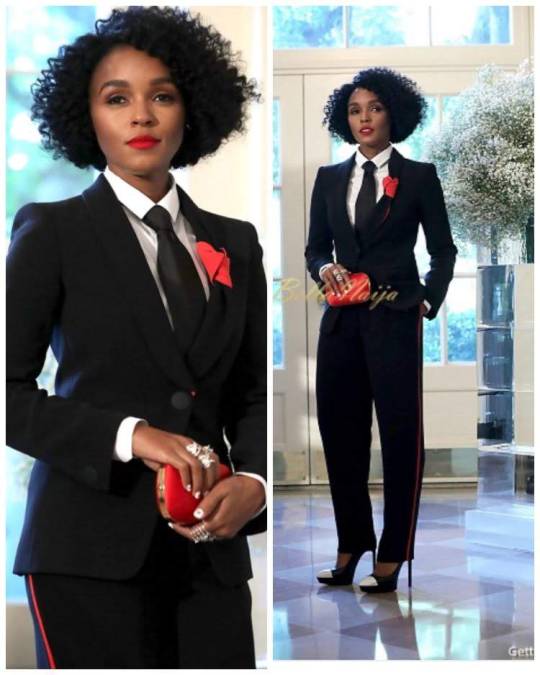

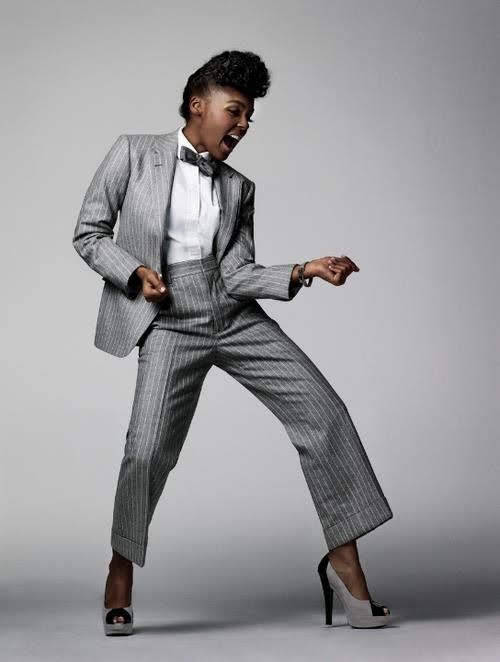
0 notes
Text
Week 7 Scrapbook: Queer Women in Media
Korra & Asami, Kya (The Legend of Korra)
A sequel to the beloved animated series Avatar: the Last Airbender, the show followed the next Avatar incarnation in the character of Korra. Throughout the show’s four seasons, she, along with her friends and mentors, attempt to keep the world at peace with the spirits and themselves. The relationship between Korra and her friend, Asami Sato, has evolved since their first introduction to one another. At first, the two were in a sort of love triangle with one of their male counterparts, Mako, both having a sort of on-&-off relationship with him in every season. However, despite whomever was dating who, the two soon grew into close friends and allies, developing a very strong bond with each other. In the last episode of show, it was hinted that Korra and Asami had become a couple, which was later confirmed by the show’s director. It was explained that nothing explicit was allowed to be shown due to intervention from the show’s network, Nickeldoen.

undefined
youtube
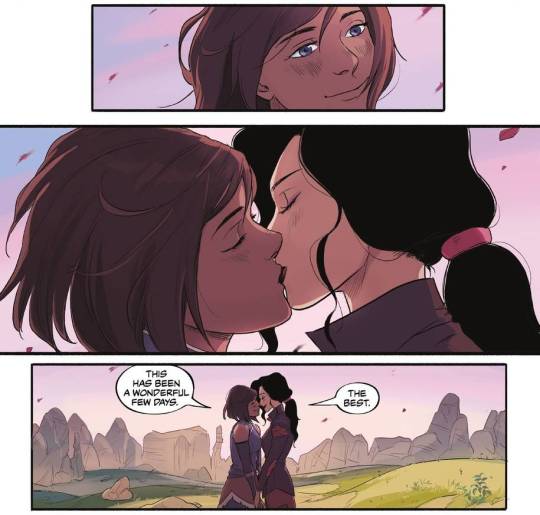
The series continued in a series of comics (Turf Wars and Ruins of the Empire), where the two meet up with characters from the show to announce their relationship. As far as I’m aware, much of the cast were very supportive of the couple; however, it was the meeting with the waterbender Kya (first row, right) that had many very happy.
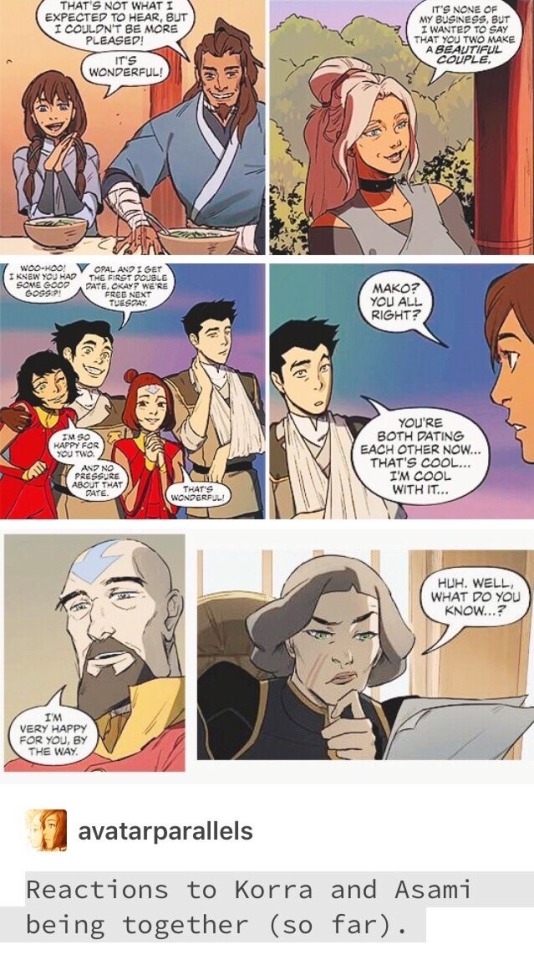
Kya is the daughter of Aang and Katara, the main couple from the previous series, who comfortably admits to the two about her past girlfriend. It is through her that we (the audience) learn how same-sex relationships are viewed throughout the different nations in the Avatar universe. In most media, there is often an erasure of female-to-female relationships as they are turned into a “version similar to heterosexual desire,” or often fetishized by the creators (Pick, “NQC & Lesbian Films”) Yet, LoK was able to positively protray both bisexual and lesbian women within a media that often times shys away from such representation at the time of the show’s airing.
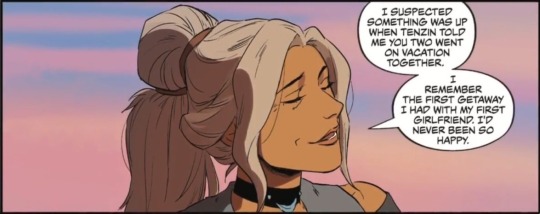
MJ Rodriguez (transgender actress)
MJ Rodriguez is best known for her role as Blanca Rodriguez-Evangelista in the FX show, POSE. Currently, she is playing the main role of Audrey in the current production of Little Shop of Horrors at Pasadena Playhouse, a role that has never been played by a women of color, nor a trans woman.

undefined
youtube
In a time where transgendered individuals and the existence are constantly being debated over how to live their lives, along with cis-gendered actors being given trans roles, Rodriguez’s casting in a normally cis-gendered role brought much support and hope for such castings to happen in the future. From my understanding of Audrey’s background and the changes/tweaks to the story of the musical, having a trans actress in such a role adds more depth to the character as it “provides commentary on [current] events and issues depicted” on stage (“Introducing Cheryl Dunye”).
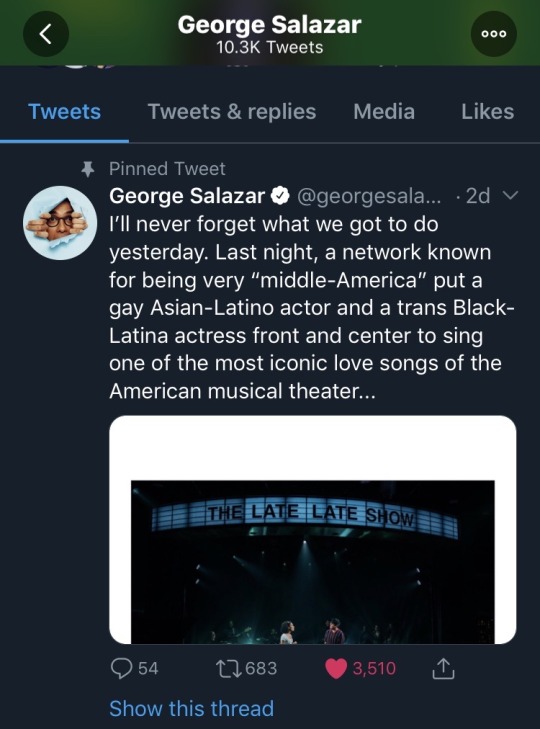
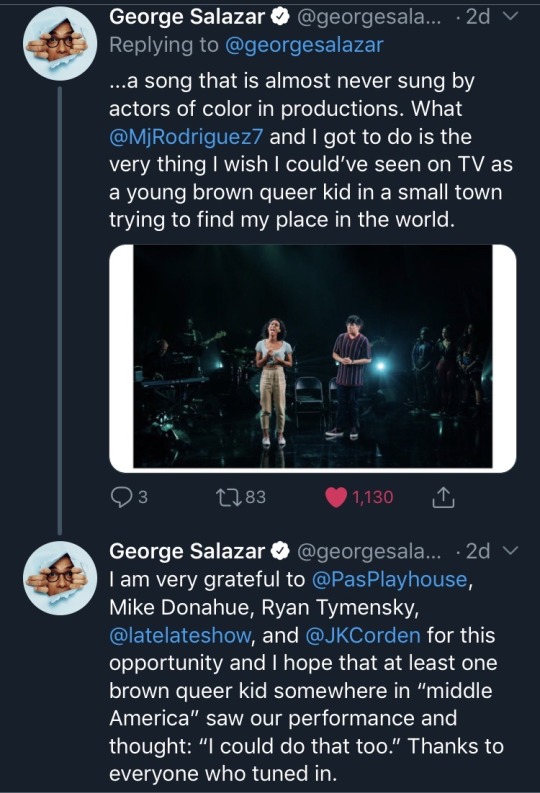
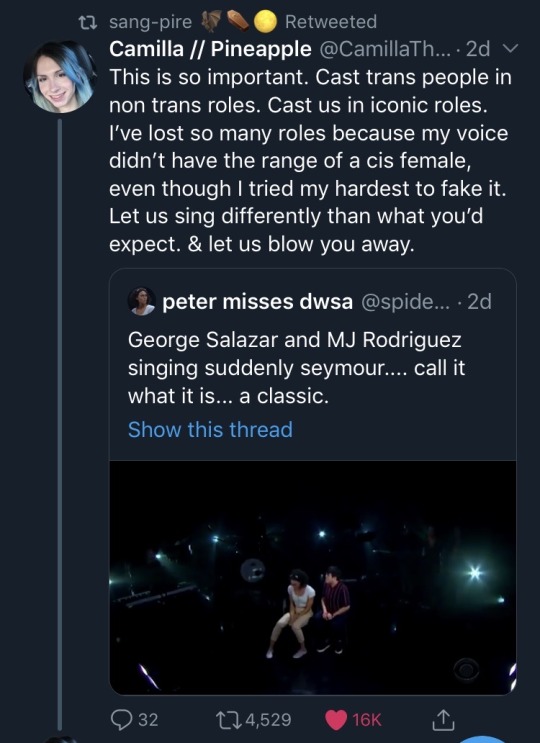
Anne Lister & Ann Walker (Gentleman Jack)
Gentleman Jack is an HBO TV series, which recounts the life of Anne Lister, a real-life historical figure known for being the “first modern lesbian.” Lister had a diary in which she recorded her struggle of making a name for herself in the business field of the early 1800s, as well as the harassment she faced for openly displaying her sexuality. Her diaries are most famous for having coded passages in which she described her romantic relationship with Ann Walker and other female lovers.
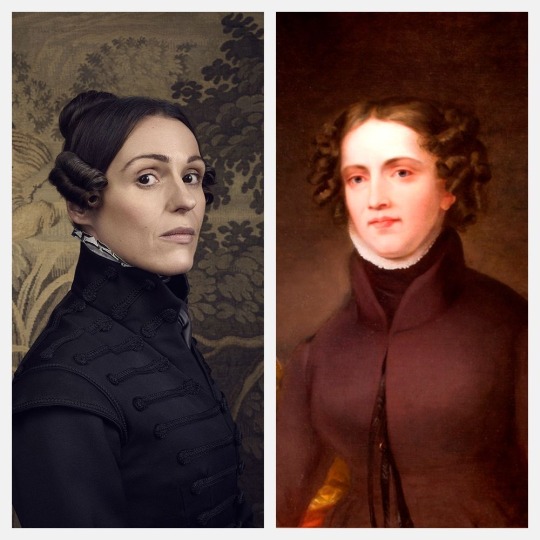
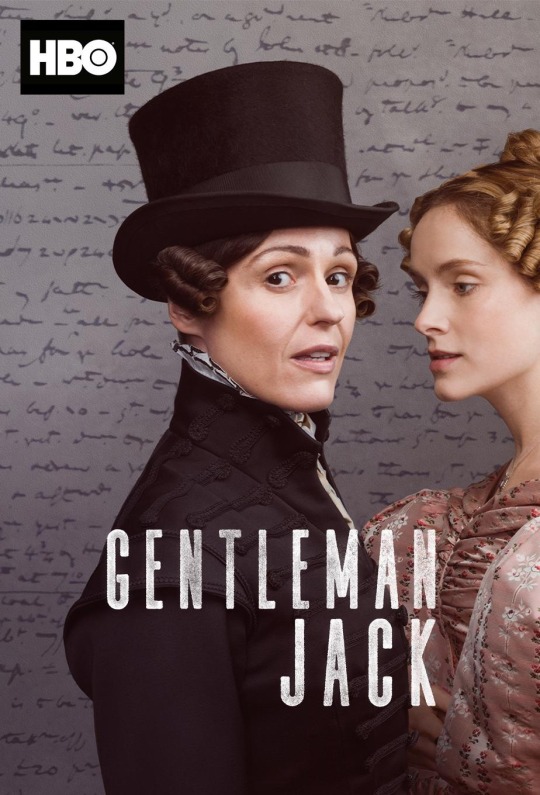
The rise of feminine power during these times was often associated with women dressing up in men’s clothing as means to “proclaim a de facto sexuality . . . [where] women declared and displayed their own libidos through male clothing codes” (“The She-man”). Ann Lister is most definitely a woman ahead of her time, and in a age where the history of LGBT individuals are often erased or disregarded, it is a refreshing sight to see the story of an openly gay woman be told as close and accurate as possible.
0 notes
Text
Week 6 Journal: Straight-Baiting in Film & Television
Many people understand what it means for a film or television show to “queerbait” its audience: hinting that a certain character may be gay/bisexual or two characters may end up in a homosexual relationship, only for such expectations to have the rug pulled from underneath and having the characters end up in heterosexual relationships. While queerbaiting is still a problem in present-day media, there has been a counter technique by many working in queer cinema in the form of “straight-baiting,” which follows the same basic model of baiting and done with a similar purpose (Uranga 1). “Straight-baiting” is the concept of showing a character(s) that have “straight” characteristics as means of getting the straight movie audience to accept and respect the character(s), then revealing a “queer” quality of their personality once the audience becomes comfortable with them. The technique is primarily used in queer cinema to garner any much “straight” interest in their productions as possible, while also challenging the audience’s expectations “without the usual resistance that might be expected” (Uranga 1).
One of the best executions of straight-baiting that I’ve experienced in modern-day media was in the 2012 animated movie ParaNorman. The movie follows a boy named Norman, who has the ability to communicate with dead spirits, and is seen to be ostracized by his hometown and own family for it. It doesn’t seem like Norman hates his gift, as he’s seen to have a good relationship with the ghosts around his neighborhood, but does wish that he could be a “normal” kid as to gain his parents’ acceptance and have friends. He is given a task from his dead uncle to calm the spirit of the town’s “witch”, who wishes to take revenge on the town for wrongly convicting her during the witch trails. Norman is joined on his journey by Courtney (his older sister), Neil (his new friend), Alvin (the school bully), and Mitch (Neil’s older brother). He learns the true story behind the “witch” and uses his gift to talk to her, hoping to calm her wrath in a way no one else has tried before. In the end, both Norman and the town accepts the way he is, leading to a happy ending with the take-away message to fully embrace your weirdness, even if no one understands.
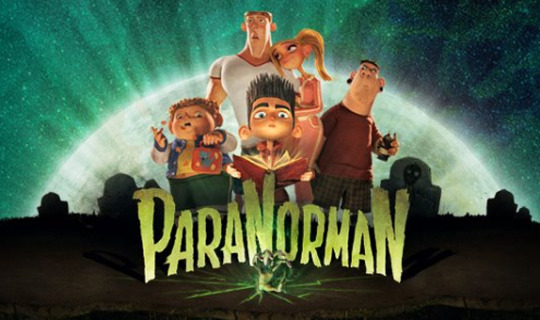
The character of Mitch (pictured middle back) is introduced to the story as a typical high school jock, seen wearing his football shorts and jacket while fixing up his rundown car. When he is first meets Courtney, a high school cheerleader with a stereotypical teenage attitude, he is shirtless and wearing a towel around his waist, as he had just come out of the shower. Courtney is immediately infatuated with him, and constantly tries to get closer to him throughout the movie, both physically and personally. Their interactions do lead to some humorous moments, consisting of Mitch completely dismissing Courtney’s advances with a straight face, or Courtney mistaking his calling of “Baby” being directed towards her, but was instead to his car. Much of the flirtation is initiated by Courtney, and her never-ending failure to get a similar reaction from Mitch leads the audience to view Mitch as a guy who is completely clueless to her attraction. However, viewers are set to believe that at some point in the latter half of the film, he will become aware of Courtney’s existence and ask her out on a date, possibly leading to a relationship.
(Starts at 2:10) https://www.youtube.com/watch?v=ybIPIjVuJkE
When the witch’s wrath is dealt with and the remaining threats are resolved, the movie focuses on various characters and how they are dealing with the aftermath. Courtney is talking to Mitch, finally gaining the confidence to ask him out. He agrees, calls her by the wrong name, and ends the conversation with the bombshell: “You’re gonna love my boyfriend. He’s a total chick-flick nut!” With this line (which happens to be his last line of the movie), ParaNorman had become the first mainstream animated film to have an openly gay character amongst its cast, later becoming the first PG-rated movie to be nominated for GLAAD’s Media Awards (“ParaNorman”). We as an audience had been given a good amount of time with Mitch, learning his personality and feelings about the current events of the movie. As mentioned before, he provides much of the film’s comedic moments, both by just being himself or talking with Courtney. There is very little that is changed in his character by the end of the movie, yet he casually coming out to Courtney invokes a wide range of reactions amongst movie-goers; many praised the movie for its positive representation of the character, while others thought it would illicit “unwanted questions” about homosexuality (“ParaNorman”). Much like how many New Queer Cinema films “conceived [the] very act of representing queerness as a way of negotiating [the film’s] meaning” and message, Mitch’s sexuality was added entirely to connect with the movie’s message of accepting people and their differences (Cenciarelli 120). As said by co-director Chris Butler: “If we’re saying to anyone that watches [ParaNorman] don’t judge other people, then we’ve got to have the strength of our conviction” (“ParaNorman”).
youtube
A similar relationship, with the role of the queer character swapped, was recently shown in the recent season of Netflix’s “Stranger Things”. Robin was introduced to the series as the co-worker to fan-favorite Steve Harrington; just the announcement by itself had many speculate if she and Steve will become the next couple of the show, myself included. The second she appears on screen, Robin became one of my favorite characters, with her personality and great chemistry with Steve making it really fun and charming to watch her on screen. It was found out halfway through the show that Robin and Steve went to the same high school, learning that she didn’t have that good of memories about him, due to his unlikeable personality many of us know from the beginning of the show. However, as the two join together to help major character Dustin decipher the messages from his radio and spending more time with one another, learning about each other and their lives, it only made it even more “obvious” that the two would end up together by the end of the season. It was believed that the show would follow the trope of a couple having met previously in their lives, not giving each other the time of day, only to reconnect later on through unexpected circumstances and fall in love with their true characters.

Steve had unknowingly grown a crush for his co-worker, needing the insight from Dustin to fully come to terms with his feelings. After escaping the antagonist’s secret lair and sobering up from the truth serum they were previously injected with, Robin and Steve are alone in the mall’s bathroom, talking about their time in high school when Steve confesses his feelings for Robin. Robin then admits to Steve that the reason she had hated him was because the girl she liked only had eyes for Steve, and that she wanted to be one to be looked at. Maya Hawke, Robin’s actress, does an amazing in portraying all the emotions one would feeling in her position: unease of whether or not to telling Steve the truth, the fear of telling him her sexuality, and feeling scared over how he would react once he knew. At first, Steve is quiet as he contemplates over the information he is given, but then accepts Robin for who she is, though does question her taste in women.
https://www.youtube.com/watch?v=HElHVsrCtlA
Stranger Things has been known for exploring wonder of the 1980s era, it was what made the show so popular when it came out. Due to the time period, some didn’t believe that the creators would allow any homosexual characters, though there was much speculation that Will, another major character, may be gay, but that hasn’t been confirmed as of yet. Robin, as the show’s first queer character, leaves much to be desired in future season: possibly more queer characters and more screen-time for Robin to further flesh her and her relationship with Steve out.
2 notes
·
View notes
Text
Week 3 Journal: Camp & the Living End
Gregg Araki’s 1992 film, the Living End, tells the story of Jon and Luke, two gay men who have been diagnosed positive for the HIV virus. After an incident leaves a cop dead, the movie explores their relationship as the two head out on the road, away from the heat of being arrested. The movie is known to be one of the earliest entry within the genre of New Queer Cinema, and is currently seen as a movie with incorporation of Camp within its direction and writing. Araki was able to utilize a handful of camp principles in his film to build off a sort of language around his characters.
The concept of “camp” has a variety of interpretations given by many people, but the most accepted principles of what Camp is are the ones written out by Susan Sontag in her book “Notes on Camp.” Sontag compiled a list of fifty-eight descriptors used to determine whether a form of media would be considered Camp or not, and a handful of things she listed would be found within The Living End. In the film, there is a female character named Darcy, whom we understand to be a very close friend to our protagonist Jon. We learn that she is an up-and-coming artist, and the few scenes we see of her home reflects that occupation and her ideas. While the colors are of a basic tint, the design of everyday objects (tables, flower pots, etc.) are extravagant and take on a modern-looking aesthetic. The architecture and floor plan of the house itself is quite a sight to see as well, with high ceilings and an open floor free of any walls. According to Sontag, Camp is often found within certain arts, particularly in clothing and visual décor (Point #5); in this case, Araki uses Camp in the physical environment around Darcy to contrast that of Jon’s home, which is shown to be much smaller and cramped, with more clutter on the floors and walls.
Another form of camp Araki incorporates into his film is his use of humor. In his article “Camp – A Queer Sensibility,” David Groff provides various interpretations of what Camp is from a variety of scholars throughout the latter half of the last century. One scholar he writes about, Jack Babuscio, identified four basic features of camp performance that still holds weight when talking about present-day Camp, one of which being the use of humor as “a means of dealing with a hostile environment and . . . defining a positive identity” (72). The Living End has various instances throughout its duration where one character (mainly Luke) cracks a joke in the middle of a tension moments, which would be deemed “bad timing in any other movie with similar scenes and subject matter. However, due to the nature of the film, these jokes bounce off as well-executed comic relief, especially when combined with the characters’ excessive use of vulgarity in their speech. Returning back to Sontag and her notes, it is written that appreciators of Camp is vulgarity, that there are feelings of amusement and delight when cursed words are spoken in camp performances (Point #48). Araki had written a high amount of lines where it feels the actors were forcefully cursing for sake of it; however, in reality, it was for the sake of providing another piece of Camp into his film.
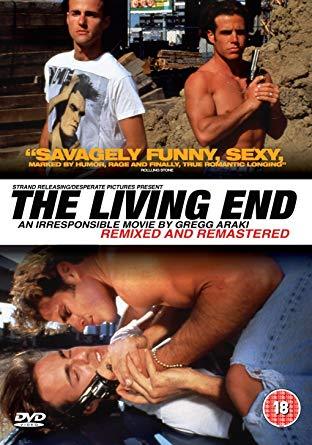
The treatment of women in The Living End is spread across a vast range of characterization. The first women we meet in the film are a lesbian couple, who try to rob Luke of his money after picking him up from the side of the road. Another woman with similar intentions is introduced later in the movie, the wife of a man whom Luke has a one night stand with behind her back. All three of these women act as a threatening force towards Luke, with their main purpose of the film to be explanations to the viewer on how Luke is transitioning between scenes. These women are the plot devices used for pushing Luke towards the places where the story needs him to be. The couple in the beginning have Luke at gunpoint, one leaves the other in the car to do her business before screaming off-screen at an unknown assailant. The second woman leaves the car to check her girlfriend, giving Luke the opportunity to jump to the front seat and escape with their car. Luke has now found his way into the city. After finding her husband in bed with another man, the third woman is fueled with anger and stabs her partner in the chest, causing Luke to flee the scene. Luke has now found his way to the parking lot, which contains the scene of him killing a group of men and running out to the street and meeting Jon. Both female-led and later instances play out in similar ways and end in near exact results: Luke is found in a sticky situation, something sudden happens that results in him opportunity to run, copy and paste for the next scene until he finally finds his way to Jon.
Then there is the previously mentioned character of Darcy, a close friend to Jon, who acts as the film’s side character and secondary couple with her boyfriend, Peter. While previous female characters acted as Luke’s driving force towards Jon, Darcy acts Jon’s reminder of his original life when the two men begin their journey on the road. For the unknown amount of time Jon and Luke spend driving from place-to-place, Darcy takes care of his house, his plants and pet, and is responsible for spending money into his account for whatever shenanigans they may be up to. As a result of his absence and her constant worry of why Jon left and when he’ll return, the relationship of the straight couple begins to crumble. At first, her relationship with her boyfriend, Peter, seem to make the audience believe they’ll be the mirror image of Jon and Luke’s relationship. One of the objectives many filmmakers of New Queer Cinema had in mind was to present homosexual characters in various forms of media, findings ways to tell a story that “reconfigure[es] traditional heterosexual notions of family and marriage” and challenge and/or subvert “assumptions about identity, gender, class, family and society” (What is Queer Cinema). As the film goes on, the audience realizes that the two couples are more similar than they are different. Both relationships begin to rift as Jon and Darcy would think about the other, Darcy seeming to care more for Jon than Peter. Both Peter and Luke take initiative in responding to their partners’ need to see the other: Peter decided to see someone else (behind Darcy’s back, mind you) while Luke strikes down and forces himself onto Jon to “remember” the reason why they left in the first place.
(Note: There were no photos of her role from the movie, only headshots and scenes from other films)

0 notes